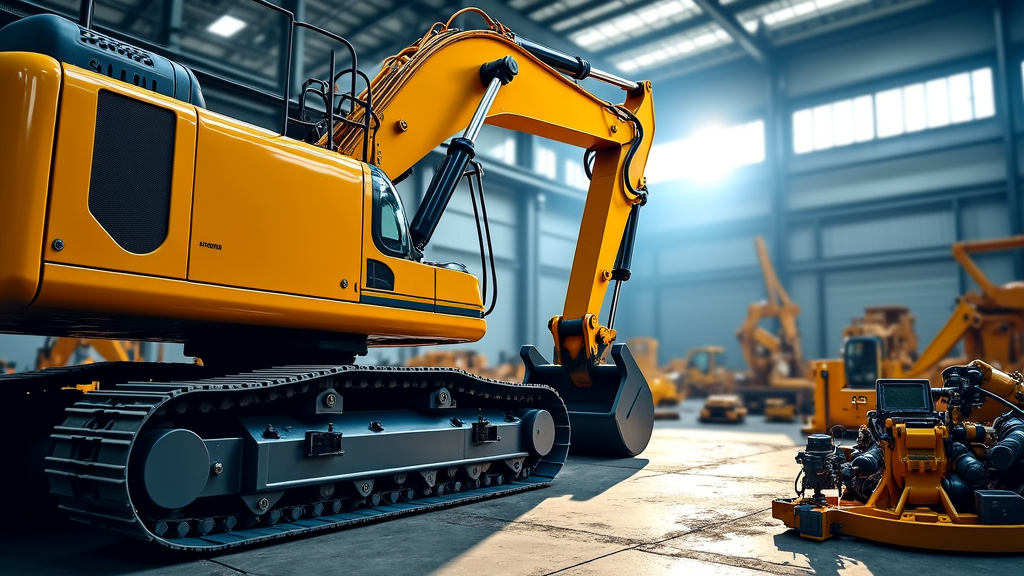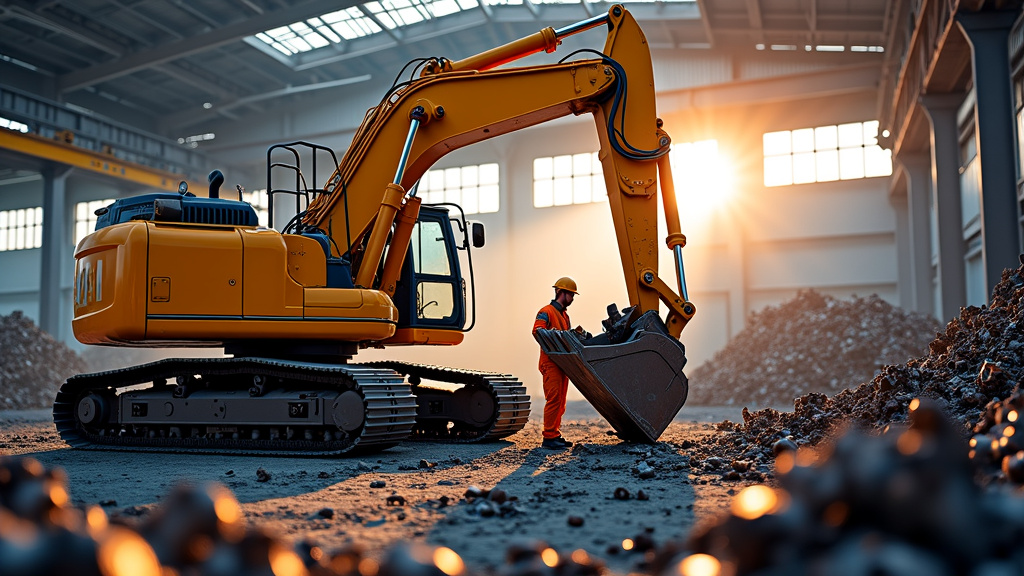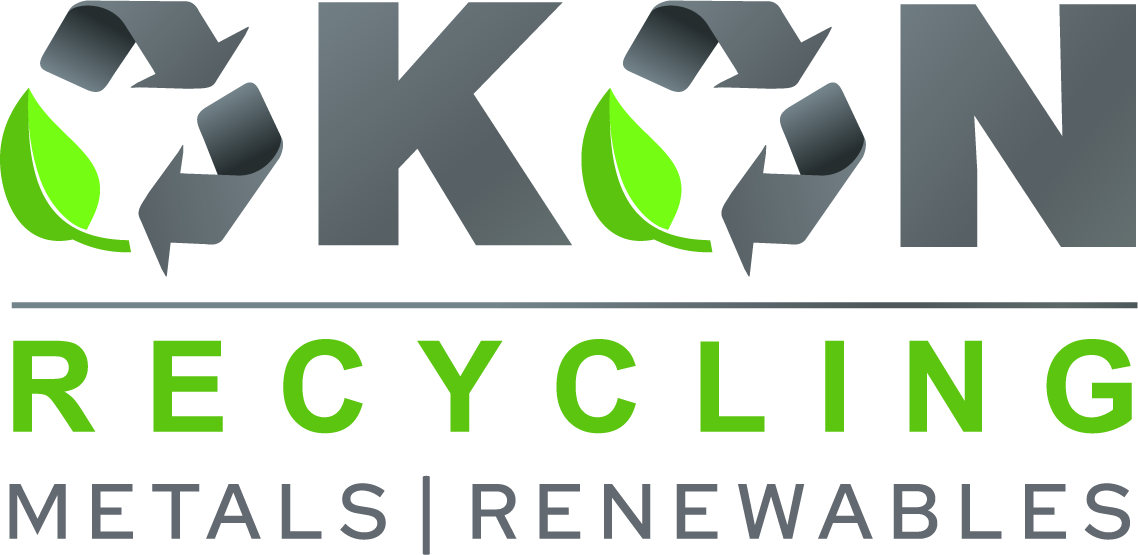5901 Botham Jean Blvd, Dallas, TX 75215
Heavy Equipment Recycling: Sustainable Solutions for Industrial Waste
April 3, 2025Did you know the construction industry generates over 100 million tons of heavy equipment waste annually in the United States? That’s enough to fill 40,000 Olympic-sized swimming pools. This statistic highlights the critical importance of heavy equipment recycling in our resource-conscious world.
Heavy equipment recycling is more than just a term; it’s a crucial process for managing industrial waste sustainably. This practice involves dismantling, sorting, and repurposing large machinery and vehicles used in construction, mining, and other heavy industries. By doing so, we not only reduce environmental impact but also recover valuable materials for reuse.
The Process of Heavy Equipment Recycling

When a massive excavator reaches the end of its working life, it doesn’t just disappear. It embarks on a fascinating journey through the heavy equipment recycling process, involving several key steps crucial for maximizing resource recovery and minimizing environmental impact.
Step 1: Decontamination
The recycling journey begins with a thorough cleansing. Technicians carefully remove hazardous materials like oils, fuels, and coolants. This isn’t just tidying up—it’s a critical safety measure protecting both workers and the environment.
Imagine our retired excavator, its hydraulic systems drained and its fuel tank emptied. These fluids aren’t simply discarded; they’re collected for proper disposal or recycling. Some, like certain oils, might even find new life in other industrial applications.
Environmental regulations play a significant role here. Recyclers must follow strict protocols to ensure no harmful substances escape into soil or waterways during this process.
Step 2: Dismantling
With contaminants safely removed, deconstruction begins. Skilled technicians, armed with specialized tools, take apart the excavator piece by piece. It’s like a giant, industrial jigsaw puzzle in reverse.
This stage requires intimate knowledge of heavy machinery. Workers identify valuable components for refurbishment and reuse, such as engines, transmissions, or hydraulic systems. These parts might give life to other machines, reducing the need for new manufacturing.
As our excavator is dismantled, its massive steel frame is separated from smaller components. Wiring harnesses are extracted, and electronic systems are removed for specialized processing.
Step 3: Sorting
Now comes the task of separating materials. It’s not just about piling metal in one place. Modern recycling facilities use a combination of manual labor and high-tech sorting equipment to categorize materials with precision.
Powerful magnets pull ferrous metals like steel from the mix. Eddy current separators help isolate non-ferrous metals like aluminum and copper. Even plastics and rubber components are sorted for potential recycling or energy recovery.
Our excavator’s parts are now spread across different bins and conveyors. Steel in one pile, aluminum in another, with copper wiring and electronic components in specialized containers.
Step 4: Processing
The final stage transforms these sorted materials into valuable resources for new manufacturing. Large metal pieces are fed into shredders, emerging as manageable chunks ready for melting and refining.
Specialized facilities handle the recycling of electronics, recovering precious metals and rare earth elements. Even rubber tracks or tires can be ground up for use in new products or as fuel for industrial processes.
Our excavator’s steel might become part of a new building’s framework. Its aluminum could end up in beverage cans, while recovered copper might find its way into new electrical wiring.
Throughout this process, recyclers face challenges. Complex equipment design can make dismantling difficult. Market fluctuations affect the value of recovered materials. And evolving environmental regulations require constant adaptation of recycling techniques.
Despite these hurdles, heavy equipment recycling plays a vital role in conserving resources and reducing industrial waste. It’s a testament to human ingenuity, turning what was once considered scrap into valuable materials for a more sustainable future.
Economic Benefits of Heavy Equipment Recycling

Recycling heavy equipment is not only an environmental necessity but also a significant economic opportunity. By revitalizing old machinery, companies can achieve substantial cost savings and stimulate job growth within the expanding green sector.
A key advantage is the considerable reduction in raw material costs. Recycling heavy equipment allows manufacturers to recover valuable metals and components, reducing the need for new resources. In fact, studies indicate that using recycled materials can save up to 88% of the energy required to produce plastics from scratch.
This resource efficiency directly benefits the bottom line. Companies adopting heavy equipment recycling report significant decreases in production expenses. For instance, recycling steel—a major component in many heavy machines—can lead to cost reductions of up to 75% compared to mining and refining new ore.
Job Creation and Economic Growth
One of the most exciting economic benefits is the surge in green jobs. The recycling industry is a robust engine for employment, creating opportunities across diverse skill sets. According to the Environmental Protection Agency, recycling and reuse activities in the United States accounted for 681,000 jobs in 2017.
| Year | Jobs Created | Economic Impact |
| 2017 | 437,000 | 1.47% annual rise in jobs |
| 2018 | 30.39 million | 0.73% growth |
| 2019 | 30.33 million | 0.18% decline |
| 2025 | 2.3 million | 2.7% GDP growth |
| 2030 | 78 million net increase | 170 million new jobs created, 92 million displaced |
Moreover, these roles are not confined to entry-level positions. The recycling sector requires a diverse workforce, from heavy equipment operators and sorting specialists to program managers and materials recovery experts. Many of these positions offer above-average wages, contributing to local economic vitality.
Financial Incentives and Corporate Image
Innovative companies are finding that heavy equipment recycling is not just about waste reduction—it’s about value creation. Many regions offer tax incentives for businesses that adopt sustainable disposal practices, such as deductions for recycling equipment purchases or credits for diverting waste from landfills.
Apart from immediate financial gains, there is a significant branding advantage. As consumers and investors increasingly prefer environmentally responsible businesses, a strong recycling program can greatly enhance corporate image. This improved reputation can lead to increased customer loyalty, easier talent acquisition, and even preferential treatment in contract bids.
Untapped Potential and Future Growth
The economic benefits of heavy equipment recycling have yet to be fully realized. Experts estimate that the United States alone has $6.5 billion in untapped economic potential from recyclable material in landfills. As technology advances and recycling processes become more efficient, this potential is likely to grow.
Innovative initiatives like Extended Producer Responsibility (EPR) and Recycling Refund (RR) programs show tremendous promise. In states with these programs, the economic benefits are evident. For example, implementing EPR and RR programs in Alabama could generate $1 billion in total annual economic benefits.
The recycling of heavy equipment signifies a pivotal shift in how industrial waste is perceived. It is not just about responsible disposal—it is about unlocking hidden value, creating jobs, and building a more sustainable and prosperous future for businesses and communities alike.
The Future of Heavy Equipment Recycling
Looking ahead, the future of heavy equipment recycling is set for continued growth and innovation. We can expect more advanced recycling technologies to emerge, further improving material recovery efficiency. The circular economy concept will likely gain traction, with manufacturers designing equipment with recycling and reuse in mind from the start.
As we move towards a sustainable future, it’s crucial for businesses and individuals to consider how they can contribute to these positive trends. Whether it’s choosing equipment with better recyclability, implementing efficient disposal practices, or partnering with recycling experts, every action counts towards a more sustainable world.
In conclusion, the future of heavy equipment recycling is about reimagining how we use and reuse resources. By embracing innovative recycling solutions and committing to sustainable practices, we can all contribute to a cleaner, greener future. For expert guidance and cutting-edge recycling solutions tailored to your heavy equipment needs, contact Okon Recycling at 214-717-4083.
